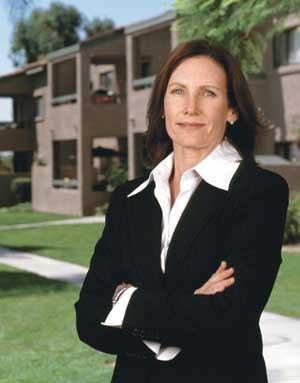Money Talks Gaining community approvals may be important, but none of this would be possible without money. SoCal Housing is fortunate to compete in one of the best multifamily real estate markets in the country. But for a nonprofit competing for properties with for-profit groups, access to money can make or break a deal. Its typical deal involves four to six sources of financing – sometimes more.
The key piece to making a deal work is obtaining equity. “For-profits,” explains Clark, “aren’t looking at perpetuity. Our mission is to keep the communities affordable. So our equity money is really the biggest key for us.”
SoCal Housing often receives its equity through tax credits or local city redevelopment agencies. Those sources can take a long time – and in Southern California, it’s tough to tie up real estate for the length of time that it takes to put together the financing. “Most [property] owners aren’t willing to sit still for the six months or the year it takes, especially since other companies already have the money available,” says Clark.
To combat this problem, SoCal Housing started an initiative to help provide low-cost equity. Its first partner, Wells Fargo, provided a $400,000, 2 percent, 10-year loan. The money is for capacity building, says Clark. “They believe that a regional nonprofit with a business focus and a public mission can help them leverage their money.”
The loan also helps Wells Fargo fulfill its community reinvestment act goals. “It is a loan, it’s not just philanthropic,” Clark says. “They also are in business to make money.”
Equity is one of several major challenges for SoCal Housing, which faces growing competition for land and buildings. “Previously, we wouldn’t see competition from anyone else for what we would say are class C properties,” says Clark. “However, we are seeing a lot of the big players – Catellus Development Corp., Simpson Housing Solutions, and others not in affordable housing – looking for properties to buy and recondition. Previously, they wouldn’t touch anything under 100 units, and now we are seeing them in that market as well.”
But SoCal Housing won’t let increase competition prevent it from fulfilling its mission. Like most multifamily owners, SoCal Housing does its share of community and social events. But the goal for these gatherings is loftier than just achieving higher renewals. The nonprofit wants families to meet and feel comfortable being together.
That way, maybe parents will let their children to go outside and play.
